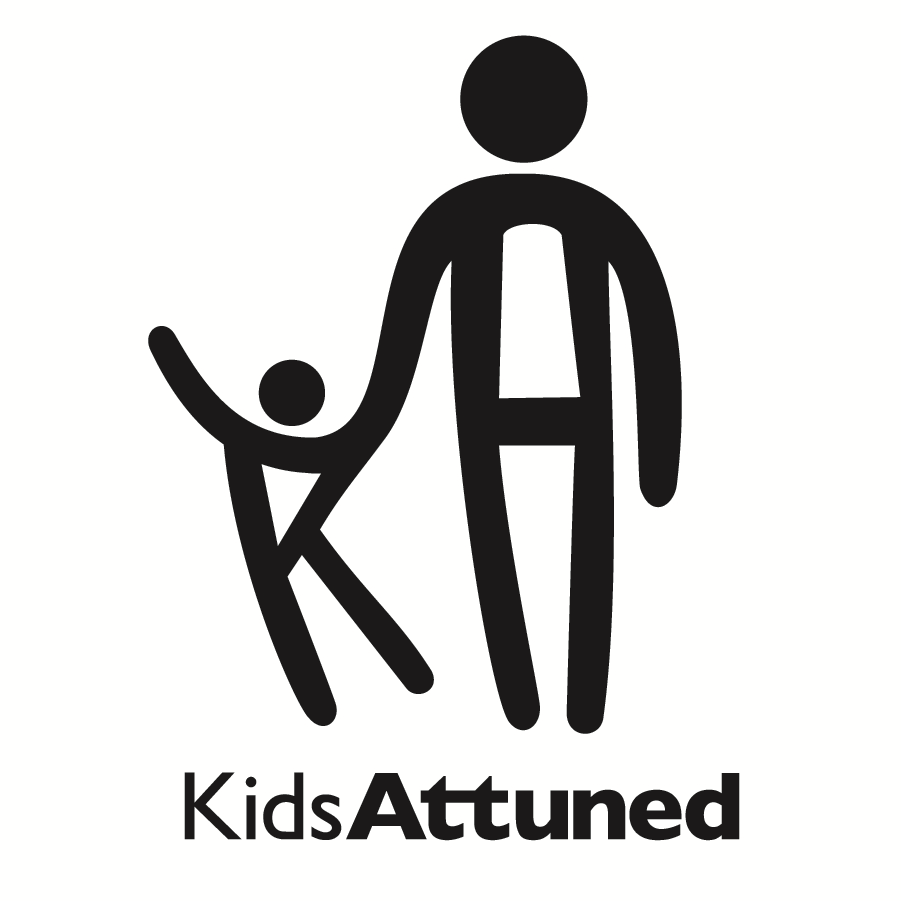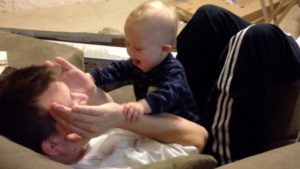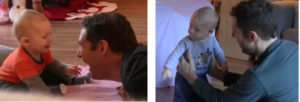 .
.
The infant-parent therapeutic process for treatment of early signs of Autism
Historically, Autism treatment methods have seen the full swing of the pendulum. Original papers by Leo Kanner, (1943) the psychiatrist from John’s Hopkins Medical Center, who first described the disorder and named it Autism, refer to the child’s constitutional difficulty with affective contact. However, psychoanalytically oriented treatments began to focus on aspects of parenting, as they did for all child treatments at the time. This is where the concept of the “refrigerator mother” became popular (Bettelheim, 1967), a term coined to refer to a distant or aloof attitude seen in the mothers of the children diagnosed with Autism. If we think about what confusing social partners these children can be for their parents, and the emotional cliff the parents can fall from in trying to relate to their child, it is not surprising that children first diagnosed at age 6 or 8 had parents who appeared a bit detached or withdrawn themselves.
In reaction to the focus on parenting deficits, which behaviorists termed “parent blaming”, principles of applied behavioral analysis or ABA (Lovaas, 1987) came as a relief to some families. Now treatment teams were available to work with their child many hours a week, focused on his or her deficits, without analyzing the parents’ psyches or histories, merely calling upon parents to be participants in professional team meetings entirely focused on the child’s observable behavior. The child’s difficulties were thought of as located solely within the child and with no bearing on parenting. This method of treatment worked well for some parents and still does for some.
The following video illustrates ABA with an infant showing early signs of ASD. Notice how the provider focuses on actions and discrete behaviors, not on the emotional qualities of the interaction with the baby.
Many families followed biomedical research, which clearly indicates that Autism is a biologically based disorder stemming from multiple constitutional and environmental triggers. Biomedical research made it clear to parents and professionals that parents were not to blame for their child’s disorder. This left the door open for a more developmental and interpersonal, parent- mediated view of how to provide intervention for children with Autism. Even in ABA style treatment circles, parents are now seen as key participants in the direct implementation of their child’s successful treatment, (Schreibman, et. al. 2015). Parent mediated interventions are seen as the most promising because the child is most invested in the relationship with the parent, which puts the parent in the best position to help the child become social and learn. Developmental research has shown that the infant’s early learning unfolds in the context of the parent’s positive regard for the baby and in moments of social encounter in which the parent interprets emotional and intentional meaning from the infant’s behavior that becomes shared meaning for the dyad. With the growth of the field of infant mental health emerging in parallel to an expanding field of infant development research, knowledge of infant – parent dyadic interaction was applied to the treatment of Autism. Among these researchers and clinicians, the focus on stimulus – response demands on the child changed to a focus on the importance of the quality of the relationship between the child and parents. The central areas of interest in treatment became interactional synchrony, the capacity of the child to initiate action and interaction, develop agency and a sense of self, the capacity for adaptive responses, and flexibility in thinking and action. This group also understood the direct relationship between early sensory motor capacities and the dual coding of sensory experience with affective experience.
The effect of the infant on the caregiver
Infant research revealed maternal sensitivity to be a key factor in determining the quality of the relationship between the infant and parent (Ainsworth and Bell 1970, Lieberman and Pawl 1993, Slade 2006, Oppenheim, et.al. 2008.) Maternal sensitivity refers to the parent’s capacity to hold the child in mind, to think empathically about the child’s intentions, and to think about the meaning of the child’s behavior to him or herself. Maternal sensitivity becomes complex when we think about the effect of the baby’s responses and behavior on the parent. For example, how does a parent make meaning of their infant’s behavior when the baby is hyper or hypo–reactive to stimuli in the interpersonal world? An infant who is over-stimulated by the changing facial displays on the mother’s face, and turns away or pulls away self-protectively, has a powerful effect on the parents’ innate capacity to interpret the meaning of the baby’s behavior and in turn on their parental responsiveness to the baby. As one mother of a six-month-old told me, “ As a mother, I just want her to be happy, and she seems happiest left alone.” The parent who waits in anticipation long beyond the normal expectation for the baby to re-join her with mutual gaze becomes confused and withdrawn. Subtle shifts in facial expression or body tension can signal the baby that Mom is no longer engaged. The pair miss each other’s signals of intention to connect and fail to build the synchronous rhythms of interaction that form the foundation for mutual pleasure in the relationship. The dynamic system is changed by repeated experiences of failure in mutuality or attunement. The system becomes characterized by physical withdrawal, shutting down of sensory seeking through gaze, flight, and freeze responses and a dis-coordination of rhythmic motor and vocal activity. The parent who expected cascading pleasure in being with this baby can become overwhelmed by grief and sadness, which is unintentionally communicated nonverbally to the infant.
The role of the therapist
Frequently, by the time a therapist enters a family’s world, unsatisfying systems of communication and interaction have already been established, and parents have assigned some meaning to the baby’s behavior. Even by 2 months of age, I have witnessed an educated parent say “you don’t like me much today,” to an infant who turns away from the parent’s face at the sound of his voice. The therapist’s role is both to hold the grief of the parent while offering hope in the form of helping the parent figure out what constitutional and environmental obstacles constrict the baby’s capacity for pleasurable sustained interaction. The therapist can lead the way to discovery through the knowledge of sensory reactivity and direct observation of the baby. There are two essential components of observation. First, notice if the caregiver’s sensitivity in eliciting affective pleasure and attention in the baby is limited or shut down by overwhelming feelings. Second, notice how the parent may lack understanding of the baby’s unique and idiosyncratic communication and sensory-motor profile. The therapist can offer support and interpretation around both arenas of observation, as well as assist the parent in understanding how they are intertwined. The infant’s sensory and motor constrictions are rarely the obvious explanation to the parent who feels emotionally rejected by the baby’s self-protective behavior. But the baby is acting to keep overwhelming stimuli from assaulting his fragile nervous system. The baby’s behavior is outside of the awareness of the social world. One outcome we frequently observe is that just at the moment the infant needs parental co-regulation the most, the parent self-protectively withdraws from contact. The work of the therapist is to explain the baby to the parent well enough to keep the parent engaged and available for heroic efforts at co-regulating a hard-to-read baby.
Pitfalls in intervention strategy
There are many misguided temptations in working with a baby or young child who is hard to reach, resistant to engagement, and avoidant of interpersonal contact. The temptation to increase the stimulation, become louder, bigger, faster, or more physical comes from the thought that the baby is avoiding interaction because he can not hear you, see you, etc., and if there is more of you, and more intensity, the baby will respond. In my experience, even the most hypo-reactive infant who does need bigger affective facial, vocal and movement displays, will avoid the fast paced multi-sensory vocal and physical stimulation that accompanies the ‘more is better’ approach. Another temptation is to rely on toys and objects to garner the infant’s interest, or to distract the infant from distress. This approach usually fails to bring the infant into contact with the parent directly, perhaps distracting the baby momentarily but leaving the child disengaged from the parent. Trying to teach the child something, rather than trying to make an emotional and social connection often misses the important first step of relationship building and learning how to read and respond to the intentions of the partner. Although it is more straightforward to collect data on moments of physical or vocal imitation, it is more meaningful to track moments of affective attunement.

Parallel process
The process of infant-parent psychotherapy with infants showing early signs of Autism expands upon the parallel process in which the therapist’s way of being with the parent effects change in the parent’s way of being with the infant, (Fraiberg, 1980). The job of the therapist is to hold the dyad and support each member’s capacity to sustain affective connection. Much of the work in infant mental health is weighted toward resolving the constrictions in the parental experience which stem from the psychological ghosts in the parent’s past that are revisited upon the baby (Lieberman and Pawl 1993, Fraiberg 1980). The therapeutic interventions consist of a blend of insight oriented talk therapy, developmental guidance and concrete support (Fraiberg 1980).
Developmental Guidance
Providing developmental guidance requires an expanded working model for infants who are not responding in expectable ways to parental overtures that would entice most babies into warm interpersonal exchanges. The therapist works as a go-between, understanding the constrictions interfering with the infant’s sensory and motor systems and interpreting to the parents both what is being observed and speculating why the infant is struggling with his or her responses. In the moments when parents’ natural overtures of affection are not reciprocated, feelings of hurt and confusion are addressed. The therapist thinks developmentally together with the parents to understand from a sensory-motor perspective how the infant is experiencing his or her world, and what is getting in the way of coding these sensory and motor experiences as emotionally and socially pleasurable. This form of developmental guidance supports parental sensitivity and is combined with the use of an insight-oriented approach to address the parents’ immediate distress and historical vulnerabilities. Together, these interventions help parents sustain empathy for the infant’s experience, buffer their feelings of inadequacy in engaging their child, and prevent parents from unintentionally withdrawing from the relationship.
Here is an example of the use of developmental guidance in the service of emotional support of the relationship.
Henry’s parents are distraught that they did not pick up his withdrawal from interpersonal contact sooner. At 20 months of age, he is alternately content and irritable; these fluctuations are largely dependent upon whether one of his parents attempts to compete with his current obsession with a particular object. They are aware that Henry loves music and reliably responds to rhythmic sound. During one session, Henry gravitates toward a large container of tinker toys with a metal bottom and lid. Rather than focus on the construction properties of the toy, the therapist suggests the sticks inside be turned into drumsticks and the container be used as a drum. Henry responds positively to this idea and repeatedly bangs on the lid. The therapist suggests joining him in the activity and finding a moment he pauses to attune to his rhythm and create a full joint action stop, joining him immediately as he begins banging again. This shared activity turns Henry into the conductor of the band, and opens the door for mutual regulation. The therapist joins the mother and Henry as the leader, as the 3 of them create a band of drummers with mutual influence on the rhythm. Amidst the liveliness in this activity, Mom notices with dismay that Henry looks toward the therapist for a gaze of mutual pleasure and a signal to return to banging whenever they all pause. With no words between them, the therapist catches the sinking expression on the mother’s face, and her fallen body posture. She assesses the reason for Henry’s gaze preference and offers a suggestion to the mother. “Let’s change places on the floor. I think Henry’s natural inclination is to gaze toward the right. If you sit here, he will be able to see you better.” With the mother on Henry’s right, he looks to her to enjoy her matching of his pause in the drumming and smiles at her as he begins to drum again.
In the interaction that followed, the therapist was able to assist the parents in assessing both the sensory-motor processes that may be constricting or derailing Henry’s natural inclinations to engage with his parents, and in gaining insight into the vulnerability for misinterpretation of his behavior as having social and emotional intent. In this situation and others like it, parents are much more likely to internalize meaning from their own emotional reactions to their child’s behavior than they are to look for elusive constitutional explanations about their otherwise healthy looking child. The therapist’s interventions help the parents experience the child as trapped by his own body, rather than intentionally rejecting their best efforts to create moments of intimacy. The therapeutic support enables parents to sustain empathy for the child and begin a journey with the therapist to understand their child’s idiosyncrasies and work together to learn how to foster engagement.
The role of the practitioner
Finally, I want to comment on the role of the therapist in the treatment process. We have neither the risk model nor the diagnostic criteria to do more than share in the parents’ concern about the ultimate diagnostic meaning of their infant’s early responses and behavior. However, when parents are worried about how difficult it is to capture their baby’s attention to their faces and voices, when the baby calms better left alone and arches away from his or her parent’s body, or the infant turns away from the parent’s face at close proximity, we have enough information to offer our support and expertise. Practitioners should not underestimate the meaning to parents to validate their concerns as real and worthy of attention. The therapeutic position alongside baby and parent allows the therapist to lend his or her vitality affects (Stern,1985, 2010) to the organization of the experience between parent and infant. Reassuring posture or vocal tone, a slow-paced comment, or long-held facial expression gives the dyad a meaningful rhythmic break from the intensity of affects parents experience and allows the baby to rest, and to modulate arousal and find the self-regulation needed to initiate contact with her parents. In summary, our role as providers is to offer emotional sensitivity and develop insightfulness in parents by creating shared understanding about the difficulties the parents are having finding intimate contact with their baby. When parents learn that these obstacles are due to the unique constitutional qualities of their infant, they are more able to sustain empathy for their baby, overcome their own distress, and maintain their heroic efforts on behalf of their infant.
REFERENCES (Part 3) Early Signs of ASD
Ainsworth, M. and Bell, S. (1970). Attachment, exploration, and separation: illustrated by the behavior of one year olds in a strange situation. Child Development, 41,1, 49-67.
Bettelheim, B. (1967). The Empty Fortress: Infantile Autism and the birth of the self. New York, NY: The Free Press.
Fraiberg, S. (1980). Clinical studies in infant mental health: The first year of life. New York, NY: Basic Books.
Greenspan, S. I. and Wieder, S. (1998). The child with special needs. Reading, MA: Addison –Wesley.
Kanner, L. (1943). Autistic disturbances of affective contact. Nervous Child, 2, 217-250.
Lieberman, A. and Pawl, J. (1993). Infant-parent psychotherapy. In: The handbook of infant mental health. C.H. Zeanah, (Ed.) New York, NY: Guilford Press.
Lovaas OI (1987). “Behavioral treatment and normal educational and intellectual functioning in young children with autism”. J Consult Clin Psychol. 55
Oppenheim, D. , Koren-Karrie, Dolev, and Yirmiya (2008) Secure attachment in children with Autism Spectrum Disorder. Zero to Three. March 2008, 28-34
Schreibman,L., Dawson,G., Stahmer A., Landa,R., Rogers,S., McGee,G., Kasari,C., Ingersoll,B,. Kaiser,A., Bruinsma,Y., McNerney,E., Wetherby,A., Halladay,A. (2015).
Naturalistic Developmental Behavioral Interventions: Empirically Validated Treatments for Autism Spectrum Disorder. Journal of Autism and Developmental Disorders
Slade, A. (2006). Reflective parenting programs: theory and development. Psychoanalytic Inquiry. 26:640-657
Stern, D. (1985). The interpersonal world of the infant. New York, NY: Basic Books.
Stern, D. (2010). Forms of vitality. New York, NY: Oxford University Press.
Filed Under: Recognizing and Treating Early Signs of Autism, Uncategorized
Enter the text or HTML code here




